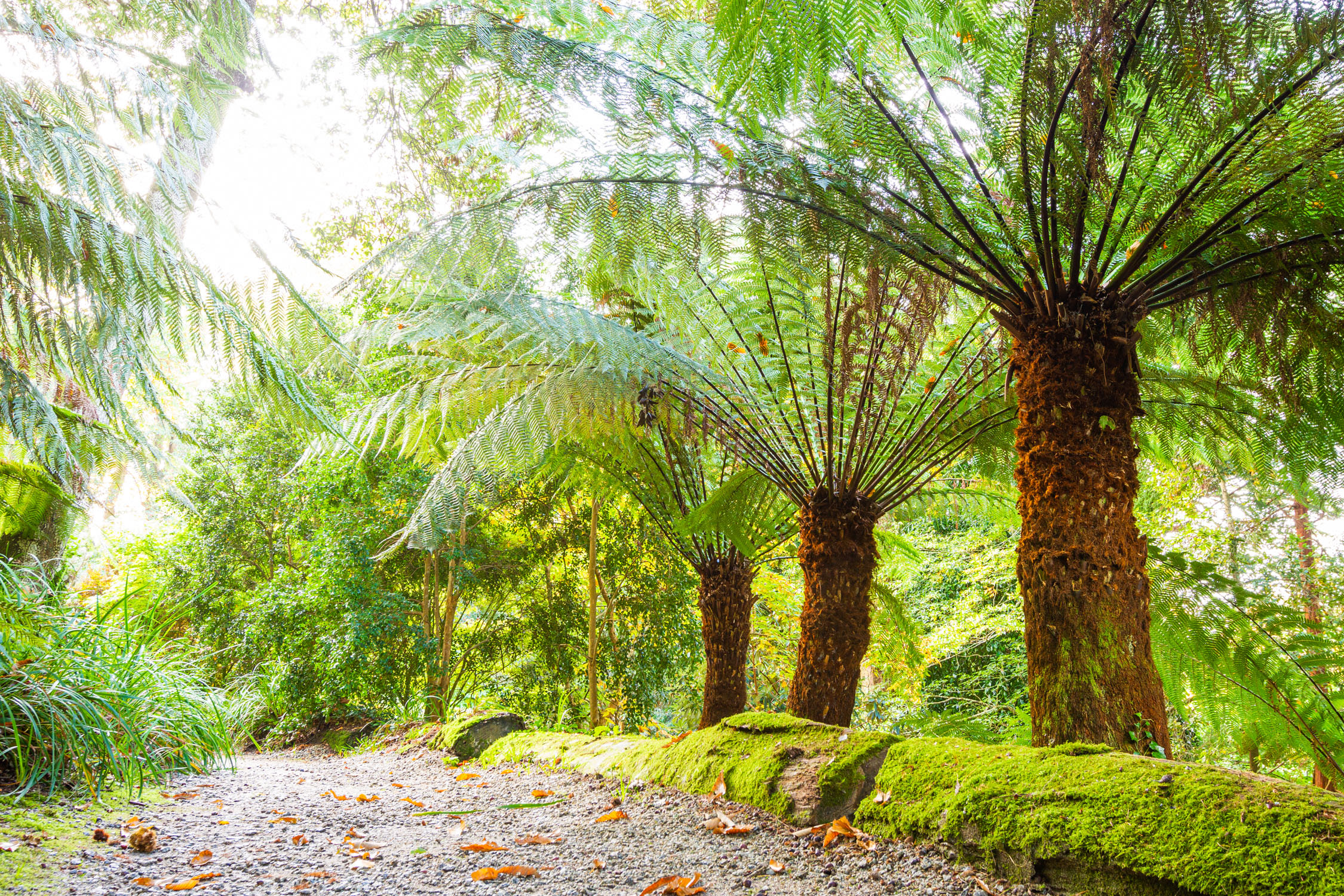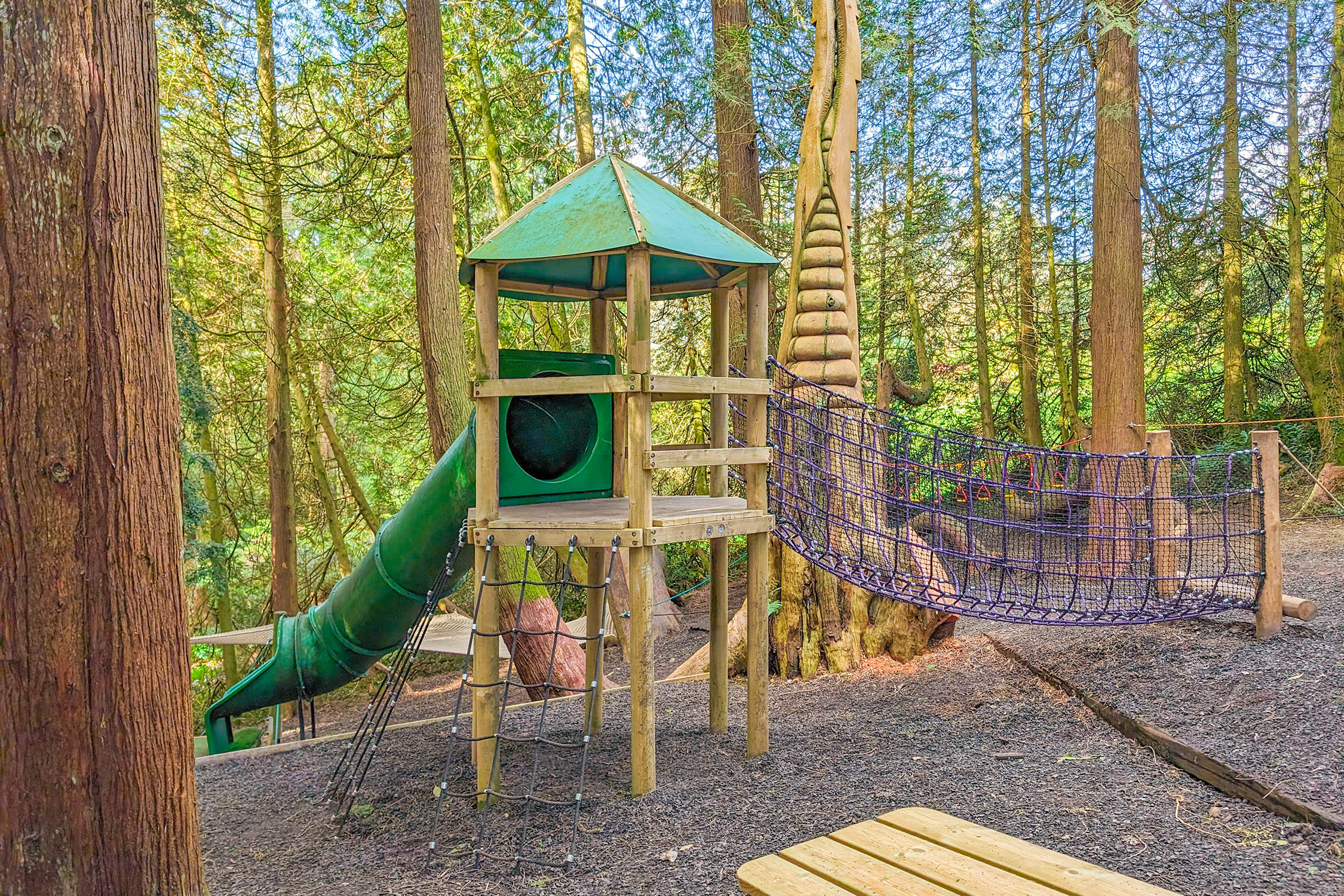Dicksonias look the same today as they did some 200 million years ago, when they rubbed shoulders with herds of dinosaur.
The trunks are made of the dead bases of the old leaves and the roots are produced from the crown and grow down through the trunk into the soil.
Slow growing, forming just 30cm (a foot) of trunk over 10 years, Dicksonia antarctica (the Tasmanian tree fern) is hardy to around -6C and is recognisable by its arching fronds and the covering of soft reddish brown hairs on the trunk. The Woolly Tree Fern is now synonymous with Cornish gardens. Stories abound as to how the first shipments of Dicksonias were bought to Cornwall. They arrived in Falmouth in the late 1860’s in the guise of logs as ballast in cargo ships from Australia and were later imported by John Garland Treseder of Truro and sold to the wealthy garden owners.
Walking round the garden at Trebah it’s easy to spot the old statuesque tree ferns introduced in the C19th, as the trunks are covered with moss and lichen.
Aside from the above, which are prolific throughout the Garden, we have a further seven different types of tree fern.
Dicksonia fibrosa (Wheki-ponga) has a trunk that can reach a comparatively massive girth and relatively short fronds.
Native to the tropical Americas from S Mexico all the way down as far as Uruguay, Dicksonia sellowiana is similarly hardy as D.antarctica.
Dicksonia squarrosa (Rough Tree Fern) is common throughout New Zealand and has buds on the trunk that can re-sprout if the main crown is damaged.
Cyathea cooperi, the Australian Tree Fern is fast growing with a slender trunk and finely divided fronds. Fuzzy brown and white scales cover the trunk and leaf stems.
Cyathea dealbata (Silver Fern) prefers warm, dry areas and is easily recognised by the white undersides of its fronds. The woody fibre of the trunk is poisonous and was used to tip spears.
Cyathea medullaris (Black Tree Fern) is one of the largest and most spectacular of all the tree ferns. It has a striking jet black trunk, covered in fine black hairs and the frond stems are also black.
Cyathea smithii (Smith’s Tree Fern) has a beautiful habit with soft, broad fronds. It favours colder, wetter habitats in New Zealand and is the world’s most southerly occurring tree fern.
On your next visit to Trebah, see if you can spot some of these more unusual tree ferns, they are all labelled and are located around the Stumpery and by the stream on Beach Path.


